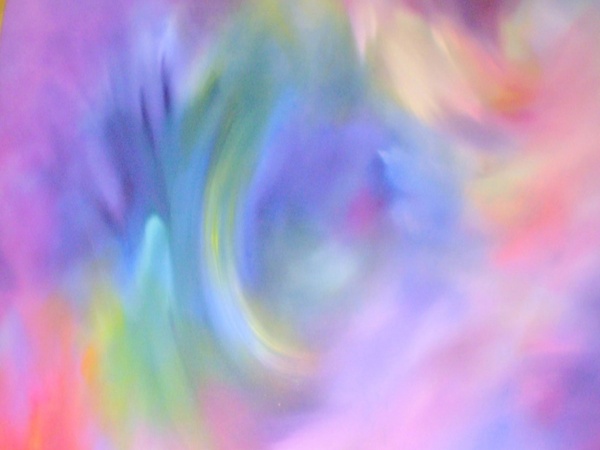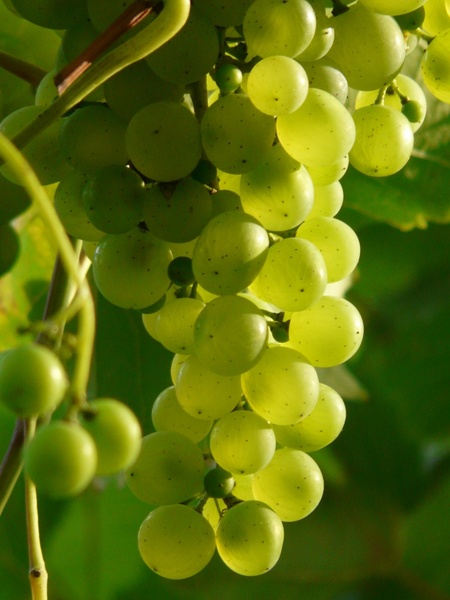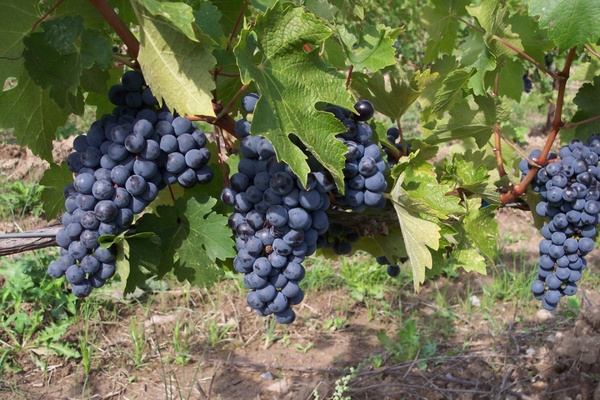
by Lorri | Apr 12, 2017 | UnCorked
Easter is one of the many annual occasions when our family gets together around the table to share and celebrate. It’s one of my favorites because it is a day of reflection joined with the welcomed excitement of spring, not to mention the well-thought out menu followed by something chocolate. But if your menu is like our family’s, it is not straightforward with just a ham as the main course. In our family, we enjoy a buffet ranging from deviled eggs to banana pudding, and that’s a lot to ask from a single wine.
Rather than focusing on the main entree for these feasts, it’s best finding wines known to play well with all types of foods. The key is food friendly wines capable of standing up to a range of flavors and textures.
For red wine lovers, bigger is not better when it comes to friendly food pairing at the Easter table. Save the high alcohol, tannic wines for the barbecue next week. Wines with high tannin will overpower most foods, so a more fruit forward, lighter bodied wine is a better choice. Think barbera, merlot, pinot noir, gamay and fruity ripe blends.
THE VALUE
- 2014 Louis Jadot Beaujolais Village, France (about $14 retail)
THE SPLURGE
- 2012 Chateau Blaignan Bordeaux, France (about $21 retail)
If you are joining me on Easter you are guaranteed to find dry rose wines gracing my table. Whether it be brunch, lunch or dinner, I can’t emphasize enough how well they match with almost every food imaginable. The key to the perfect rose for food pairing is ensuring it’s a dry style and not sweet.
THE VALUE
- 2015 La Vieille Ferme Cotes du Ventoux Rose, France (about $14 retail)
THE SPLURGE
- 2014 Hogwash Rose, California (about $18 retail)
Sparkling is another reliable wine able to complement practically any food, from appetizers and entrees to desserts. I use sparkling wines to mix for mimosas at a brunch and as the single wine for buffet service. It’s also wonderful for Easter menus because it always brings a celebratory feel to the occasion, so even if you just begin the meal with a glass for a family toast it’s a special touch.
THE VALUE
- NV Segura Viudas Brut Reserva Cava, Spain (about $13 retail)
THE SPLURGE
- NV Gloria Ferrer Brut Sparkling Wine, California (about $32 retail)

by Lorri | Apr 5, 2017 | UnCorked
Recently I saw a wine-blending kit that helps consumers blend different varietals to create their own wines. It was being offered as a simple process. Implying that if you have a merlot, cabernet sauvignon and a few other varieties you can mix them together and, I guess, just stir.
But there are those who have attempted this process, including me, who might agree that blending wine is something best left to professionals. Still, the question of whether blended wines are of lesser quality continues to be one that I am often asked. It’s a topic that is becoming more relevant because consumers seem to have a tendency to shy away from blends.
Blending is when a winemaker combines different “lots” or batches of wine from the cellar to create the final wine that ends up in bottles. Most winemakers have a vision of the flavor and style they want to create even before the grapes are harvested. Many winemakers find blends interesting and exciting to create, while for others a blend may be created out of necessity or because a grape is in short supply due to growing conditions.
In the United States, to qualify as a single varietal wine the product must contain at least 75 percent of one type of grape. There are very few grape varieties that are able to stand on their own. White wines are generally from a single grape variety, but there are exceptions. Even wines with simple flavor profiles can include a minuscule percentage of another grape to change or enhance the finishing style.
Blended wines are some of the most sought in the world: red Bordeaux is generally cabernet sauvignon, merlot, cabernet franc and petit verdot. For Champagne, one of the most complex blending processes is generally pinot noir, pinot meunier and chardonnay. Chianti has traditionally been a blend but today we see more and more use of a single grape sangiovese. But those most likely never to be blends are red Burgundy (pinot noir) and white Burgundy (chardonnay.)
Blending is a pragmatic operation and winemakers like to retain an element of flexibility. The goal, however, is the same — to make the best possible wine each year.
THE VALUE
- 2014 Apothic White Blend, California (about $13 retail)
THE SPLURGE
- 2013 Spann Classic 4 Red Blend, California (about $27 retail)

by Lorri | Mar 29, 2017 | UnCorked
I can’t believe this month marks 12 years I have been writing Uncorked. That’s a lot of columns that I hope are always filled with useful information that can help you explore — and drink — many great wines. I absolutely love sharing ideas each week but, more importantly, I enjoy the feedback from you.
Each year as I celebrate this anniversary I reflect on all of the questions and ideas you share because these frequently turn into the topics for Uncorked. Please continue, as your feedback helps me keep this column relevant. As always I want to offer honest recommendations of wines we can find in our market. Above all, I hope this column makes wine, often a pretentious and confusing subject, fun to explore and even more enjoyable to drink.
These are a few of my favorites over the past year. Enjoy!
THE VALUES
- 2013 Chateau Bonnet Blanc, France (about $15 retail)
- 2013 Mas des Roches Cotes-du-Rhone Rouge, France (about $15 retail)
- 2015 Bodegas Emilio Moro Resalso, Spain (about $15 retail)
- NV Zonin Prosecco, Italy (about $15 retail)
- 2013 Parallele 45 Cotes du Rhone, France (about $15 retail)
THE SPLURGES
- 2013 Keenan Napa Valley Cabernet Sauvignon, California (about $47 retail)
- 2014 Robert Mondavi Winery Merlot, California (about $26 retail)
- 2015 Marc Bredif Vouvray, France (about $26 retail)
- 2014 Schug Sonoma Coast Pinot Noir, California (about $24 retail)
- 2014 Sean Minor Nicole Maria Red Blend, California (about $24 retail)
- 2014 Bell Winery Sauvignon Blanc, California (about $18 retail)
- 2013 Mira Cabernet Sauvignon, California (about $52 retail)

by Lorri | Mar 22, 2017 | UnCorked
When I travel, my priority is exploring and learning the local wine regions. My family has been traveling to Marbella, Spain, for several years. As is sometimes the case with a traveling writer, I am typing this column while sitting on the beach enjoying the soft rolling waves of the Mediterranean Sea and, of course, a glistening glass of local wine is sitting on my side table. Which brings me back to exploring local wines.
This trip I decided I had exhausted winery and vineyard visits throughout this area and instead focused on local wines I would find in grocery stores and restaurants. That was the easy part. The daunting part was finding wines I could also enjoy in my Adirondack chair sitting on my deck at home in the Arkansas sunshine.
Verdejo was by far the most accessible of white wines. Wines from this grape line the retail shelves with hundreds of producers. Verdejo is generally the “house wine” at restaurants. It’s similar in style to some sauvignon blancs and pinot gris. It is produced in the cool region of Rueda where it has a sharp acidity, lemon, citrus and mineral flavors. But the biggest appeal of this local gem is the price. It ranged from $3 to $15. Almost all the styles we’ve tried in Spain are available in the United States for $15 or less. However, the most important tip I can impart is to be sure you are buying a very recent vintage because the acidity and refreshing aspect is the reason it’s so enjoyable to drink.
Most of us are very familiar with the red wine rioja. Bottle after bottle — that wine never disappointed. It was an easy pair-up to almost any dish, from red meat to seafood. Made mostly from the tempranillo grape, it ranged from $5 to $30 on the retail shelves and on wine lists. The style most locals buy as an everyday drinking wine is the young, fresh and fruity taste. Checking Arkansas stores, I found many styles and price points readily available.
THE VALUE
- 2015 Tapena Verdejo, Spain (about $12 retail)
THE SPLURGE
- 2013 Campo Viejo Rioja, Spain (about $24 retail)

by Lorri | Mar 15, 2017 | UnCorked
I think just as we search out new tastes and flavors in food we crave the same in wines. If you are looking to fall in love with another grape, have I got the grape for you. It’s the soft, perfumed, uplifting, savory, creamy and rich viognier. This is a grape, I like to say, that if you are one to stop and smell the flowers, then viognier will make you swoon.
It’s a grape we are lucky to have in the wine world. Just a decade ago few wine enthusiasts had ever even heard of the grape much less tasted the wine. Around 1965, Condrieu, a tiny Rhone appellation in Southern France, may have single-handedly kept viognier alive. Some say it was down to a mere 20 acres of barely thriving viognier vines. A single vintage was producing a minuscule amount of wine.
Josh Jensen of Calera Wine Co. in California decided this was a great grape to explore, and planted a few vines in his mountain vineyard. George Duboeuf, the “king of Beaujolais,” was also planting them in France, and many more growers around the world followed. By the mid-1990s not only was this grape being planted all around the world but wine consumers were falling in love.
There are always exceptions, but as a general rule, this grape is at its best when young and fresh. When describing the taste of this wine you can think of every aromatic fruit and flower you can and then throw them in a wine glass. It can have aromas of apricots, peaches, spice, honeysuckle and jasmine. Those who don’t care for the high acidity of grapes such as sauvignon blanc will enjoy the low acidity captured when growers pick the viognier early.
When it comes to matching viognier with food, I think it is best enjoyed as an aperitif. This allows you to revel in its intoxicating perfume. But that’s not to say it doesn’t pair well with food. It’s a good match with mildly spicy dishes, chicken with cream, and perfect with rich-tasting seafood such as lobster.
To not let you down, I tasted quite a few voigniers to compile this week’s recommendations. The ones listed showcase the best in all price ranges for the aroma and taste of this grape. Some have been blended with a small number of other grapes, yet still express the lead traits of viognier.
THE VALUES
- 2015 White Knight Viognier, California (about $12 retail)
- 2015 La Playa Viognier Chardonnay, Chile (about $10 retail)
THE SPLURGES
- 2013 Ferraton Pere & Fils Condrieu Les Mandouls, France (about $60 retail)
- 2014 Treana Blanc, California (about $28 retail)
- 2014 E. Guigal Cotes du Rhone Viognier, France (about $20 retail)

by Lorri | Mar 8, 2017 | UnCorked
Burgundy. Most of us are familiar with burgundy, the dark red color named after the wine. And perhaps many of us are familiar with Burgundy as a general term for French red wine.
Fewer likely know that Burgundy is a specific wine region in eastern France. And not all Burgundy is red.
It’s a fascinating region to learn about, but also maddening as it can take years of study to master. What keeps most of us interested is that it offers some of the most sublime drinking on the planet.
Unlike other French regions where many grapes are grown and used in labeled wines (Bordeaux permits up to eight; Chateauneuf-du-Pape allows 13) Burgundy has only a few. There are two main grapes in the prestigious vineyards of Burgundy, three if you include Beaujolais. A rather simplified way of looking at it is if you’re drinking white it’s chardonnay; red is pinot noir; and Beaujolais is gamay.
The area is divided into five main regions, two of which, Chablis and Beaujolais, are sometimes considered distinct regions. The others are the Cote d’Or, the Cote Chalonnaise and the Maconnais.
The area most wine lovers revere is the Cote d’Or, a 30-mile long strip of land to the south of Dijon, which produces much of Burgundy’s greatest and most famous wines. The northern half is called the Cote de Nuits producing mainly reds and the southern half the Cote de Beaune producing some of the world’s greatest whites as well as some reds.
The key to understanding Burgundy is to familiarize yourself with the names of individual villages or communes such as Meursault, Gevrey-Chambertin or Nuits-St-Georges. Each area is subdivided into individual vineyards which may in turn be divided into many different owners.
This is where it gets really confusing, especially in the Cote d’Or, because this area is so minutely parceled. This in part because the land has been continuously owned by individual small land holders — the combination of the Napoleonic Code, insistence on equal inheritance for every family member and the fact the land is so valuable meant that small family holdings have been divided and subdivided and even subdivided again over generations — as opposed to large estates found in our regions. One vineyard or climat, may be owned by many different individuals each sometimes cultivating and bottling just a single row or two of vines.
But the best way to learn about Burgundy is in the glass. In the past week, I have tasted these wines that are distinct examples of the breathtaking intrigue Burgundy wines offer. Each one signifies those undeniable differences in terroir yet all growing with those same simple grapes.
- 2013 Nicolas Potel Rully 1er Cru La Pucelle, France (about $59 retail)
- 2014 Nicolas Potel Pernand-Vergelesses 1er Cru Les Fichots, France (about $65 retail)





